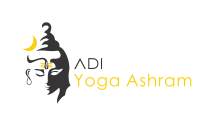Shavasana (Corpse Pose): How to Practice, Benefits and Precautions
Shavasana, known as Corpse Pose, is often considered the most important yet most challenging yoga pose, primarily due to its profound simplicity and the deep relaxation and awareness it cultivates. This pose marks the conclusion of yoga practice, where physical and mental activity ceases, allowing for a period of systemic integration and rejuvenation. Despite its simplicity, mastering Shavasana’s subtle art offers extensive benefits for the mind, body, and spirit.
Historical Origins
Shavasana derives its name from the Sanskrit words ‘Shava’ meaning ‘corpse’, and ‘Asana’ meaning ‘pose’. This pose is a traditional practice, deeply rooted in the yoga tradition, serving as a bridge between the physical practice of yoga and the meditative aspect. Historically, it is designed to prepare the body for deeper spiritual practices such as meditation, fostering a state of deep relaxation and peace that concludes a rigorous physical practice. Its use as a transition into meditation highlights its importance in the holistic practice of yoga.
Join Our 300 hour yoga teacher training in India
Instructions:
- Lie flat on your back on a comfortable, flat surface, ensuring that your environment is quiet and free from distractions.
- Keep your legs slightly apart and let your feet and knees relax completely, with the toes facing towards the sides.
- Place your arms alongside your body, palms facing upward, slightly separated from your body to allow your armpits to breathe.
Adjustments:
- Gently close your eyes and let your eyeballs roll slightly upwards towards the forehead.
- Make any adjustments to ensure comfort, such as placing a pillow under your knees or a blanket under your head if needed.
Relaxing the Body:
- Consciously scan your body from head to toe, releasing tension from each part. Start from the crown of your head, move to your facial muscles, neck, shoulders, arms, chest, abdomen, thighs, legs, and finally, the toes.
- With each exhalation, imagine expelling all the stress and tension from your body.
Breathing:
- Breathe deeply and slowly through your nose, allowing your body to relax deeper with each breath.
- Focus on the rise and fall of your abdomen to deepen relaxation.
Benefits of Shavasana (Corpse Pose)
Shavasana helps in reducing blood pressure, anxiety, and insomnia by promoting deep relaxation. The pose facilitates the body’s healing process during this restful state, making it particularly beneficial after strenuous physical activity. It also aids in the integration of the benefits of other poses performed during the session.
Contraindications
While Shavasana is a restorative pose, those with back issues may require additional support under their knees or lower back to avoid discomfort. Additionally, pregnant women should modify the pose by lying on their left side to avoid pressure on the vena cava.
Closing Thoughts
Shavasana, though seemingly passive, plays a crucial role in yoga practice. It is not merely a moment of relaxation but a profound practice of releasing and surrendering. It teaches us to let go of the physical and mental effort, guiding the practitioner into a state of balance and renewal. Through this pose, one can experience a glimpse of the tranquility and vastness that lies within, making it not just a conclusion to a yoga session but a gateway to deeper, meditative states. Embracing the essence of Shavasana can transform your yoga practice and bring lasting peace and rejuvenation to your daily life.
Learn to know more about Shavasana (Corpse Pose) so you can visit the yoga ashram in India and 200 hour yoga teacher training in India and aerial yoga teacher training in india



